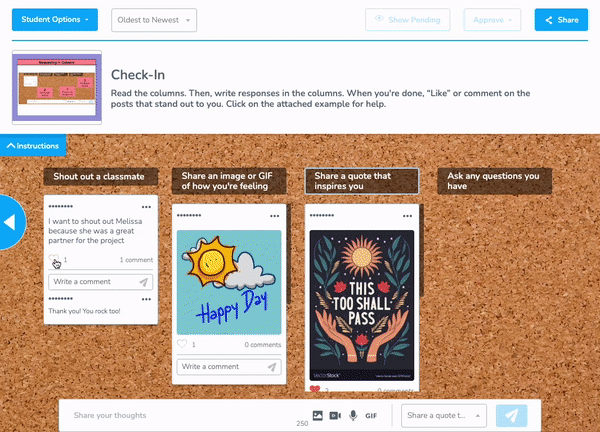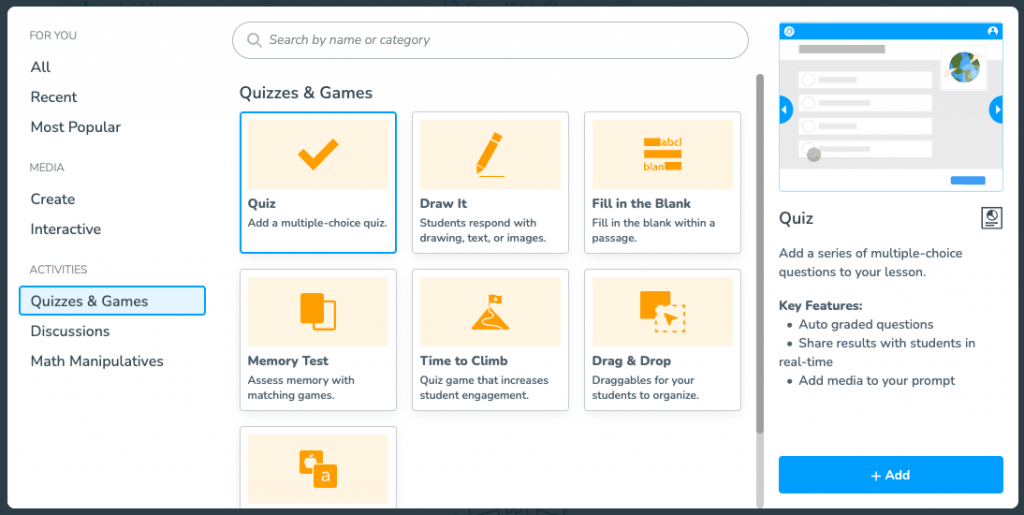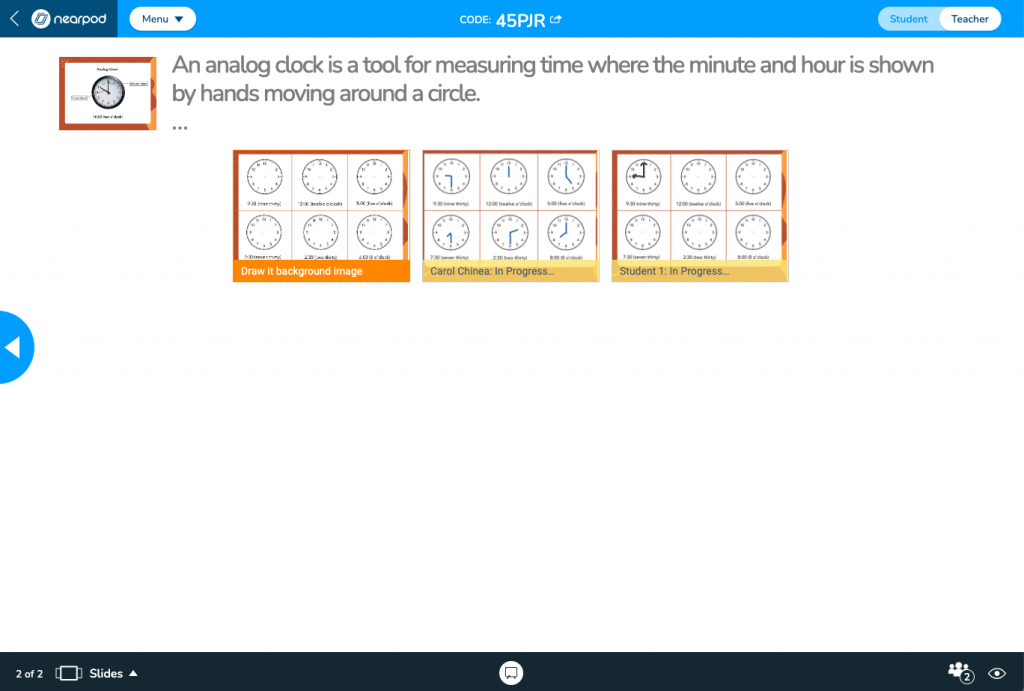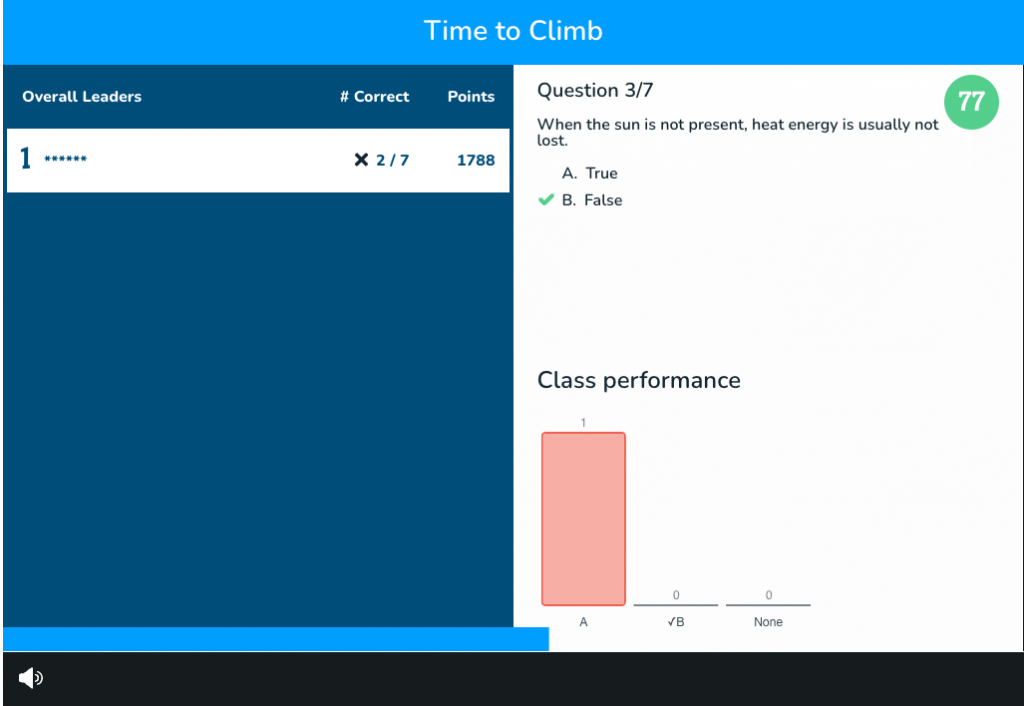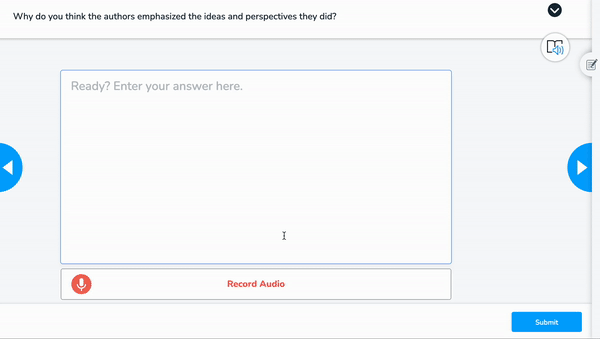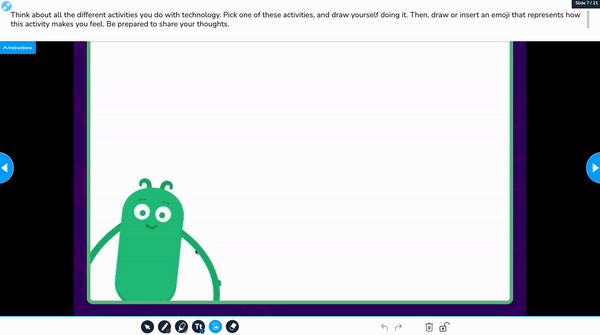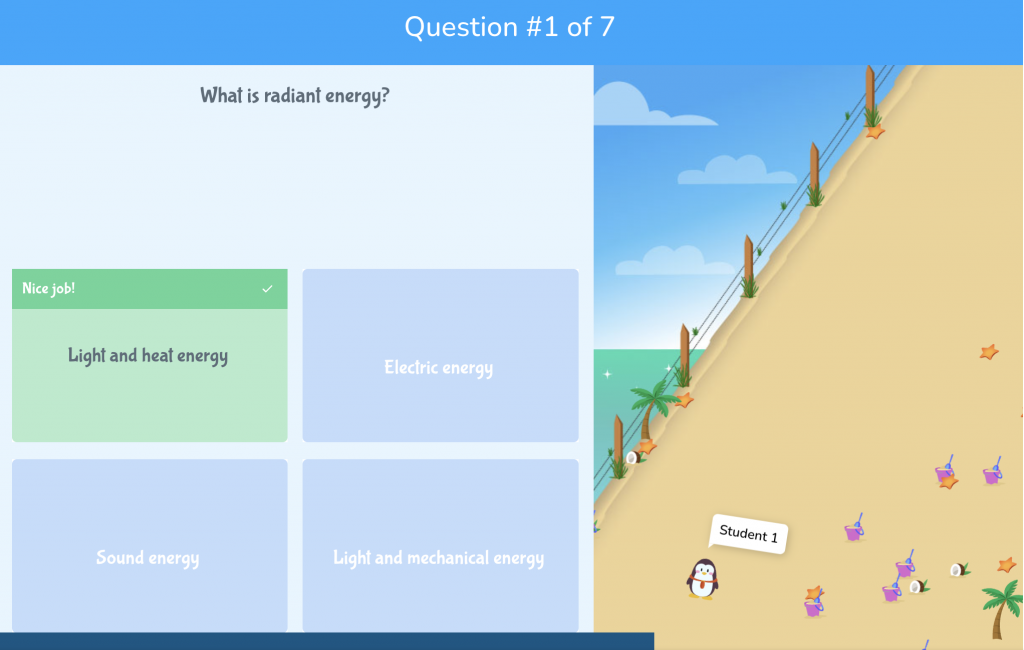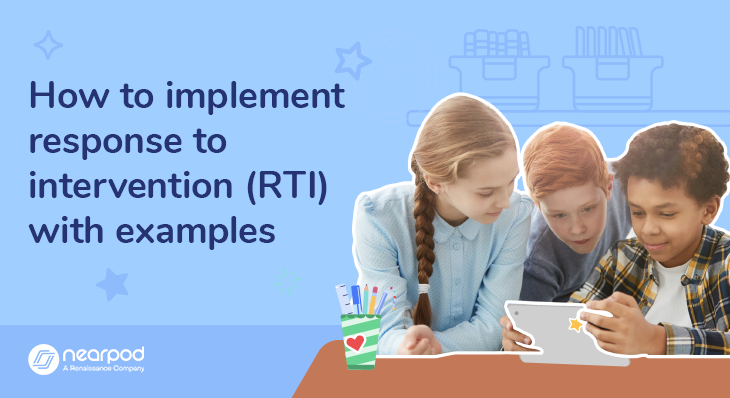
How to implement response to intervention (RTI) with examples
Response to Intervention (RTI) is a term that is often used in education but over time has come to mean different things to different people – and it doesn’t always convey an accurate idea. Let’s establish a definition that ensures a common understanding of RTI and how to implement the RTI and Positive Behavioral Interventions and Supports (PBIS) frameworks within Multi-Tiered System of Supports (MTSS).
What is the Response to Intervention (RTI)?
As a formal educational process, Response to Intervention (RTI) was introduced as part of the reauthorization of the Individuals with Disabilities Act (IDEA) in 2004. RTI was designed to help educators more clearly determine whether a child is in need of special education services, by examining how a child responds to scientific research-based intervention instead of relying on a discrepancy model (King, 2019). While RTI initially focused on children with special needs, it should no longer be limited to that population. The RTI model has evolved to encompass the use of multiple tiers to support all students in general education classrooms.
What is the difference between a Response to Intervention (RTI) and a Multi-Tiered System of Supports (MTSS)?
In conjunction with RTI, you likely have encountered the Multi-Tiered System of Supports (MTSS) and Positive Behavioral Interventions and Supports (PBIS). RTI and PBIS are included under the MTSS umbrella framework. Each of these, in its own way, is designed to provide a structure for increasing the intensity of support for students. RTI is more heavily focused on supporting students with their academic learning, whereas PBIS leans more toward preventing unwanted or off-task behaviors. MTSS works to bring all the pieces of both frameworks – plus the family engagement component – into the educational picture, creating the most complete support structure possible.
What are the three Response to Intervention tiers?
There are three RTI tiers:
- Tier 1 includes all learners (80-90%) and is driven by core instruction. Tier 1 is the foundation, the core of all learning that happens academically, and the starting place for procedures and expectations of behavior.
- Tier 2 includes some learners (5-10%) and is driven by targeted instruction. In Tier 2 interventions, more explicit instruction is needed for some students and can serve as a precursor to intensive interventions when Tier 1 strategies are insufficient.
- Tier 3 includes few learners (1-5%) and is driven by intensive instruction. In Tier 3, more explicit instruction is needed for a few students who may have more significant challenges, including those with learning disabilities.
Whether thinking about instruction and academic achievement or behavior and social well-being, intervention can happen in three levels or tiers. In the simplest terms, those three tiers are “all, some, and few.” When exploring what is response to intervention in special education, it’s essential to recognize that RTI can be applied across various educational settings. Some models will include a percentage for more precise categories; those are typically 80-90%, 5-10%, and 1-5%. Occasionally, you might encounter strong adjectives such as core, targeted, and intensive. Regardless of what label you prefer, each tier represents the group of students and the level of support needed, including unique opportunities and challenges.
How to implement effective RTI
Let’s explore valuable insights and practical examples of how to navigate the world of RTI to support students’ academic and behavioral needs. Whether you’re a seasoned educator or a newcomer to the RTI process, you’ll find actionable strategies that can make a meaningful difference in your classroom.
Foster a love of learning in every student with Nearpod. Teachers can sign up for free below to access and create interactive lessons and activities mentioned in this article. Administrators can schedule a call with an expert to unlock the full power of Nearpod for schools and districts.
1. Empowering student agency for self-advocacy
Teach students to recognize, understand, and advocate for their own academic and behavioral needs. This moves students to become authentically invested in their own progress. Conferencing with students is one way you can implement this. Having short one-on-one conversations about their latest writing task or the math problem they solved can encourage students to reflect on their learning successes and failures. Quietly inquiring about a change in behavior to determine the root cause can give students the language they need to express themselves before behaviors escalate. This can be implemented to the whole class and across all RTI tiers.
Use Nearpod to encourage students to explore and share how they learn best. This can be done through open discussions with a Collaborate Board or by presenting suggestions for them to consider with a Poll or a Matching Pairs activity.
If you’re focusing more on PBIS, set or review the expectations for the learning environment for your class at any point in the school year. Gather student input about what behaviors help them to learn and what can slow the learning for them or for others. On Nearpod, set up a Collaborate Board and ask students to post two behaviors they have seen or experienced – one that helps their learning and one that slows their learning. Use the posts to establish acceptable behaviors for the class.
Here’s a Nearpod lesson teachers can use:
- Learning to Learn (Grades 3rd – 8th): In this Life Skills lesson in partnership with Classroom Complete Press, students will discover effective tools for effective learning. Your students will be able to explain the different methods for learning and different learning styles and identify their own personal preferred learning style.
2. Evaluate students fairly
In Tier 1 of Response to Intervention strategies, it is important to clearly see every student academically and behaviorally. Often, the student with the biggest academic challenge or the worst behavior is overlooked, with the assumption that they will get intervention later. However, exposing every student to grade-level content and holding high expectations for behavior can be an initial intervention in and of itself. Treat all students as if they can and will be successful; you might just be the only person who does.
Nearpod can help create opportunities for students to share their responses to all questions while building confidence in themselves and connecting with others. Use Nearpod’s interactive activities and formative assessments, which include well-designed questions that enable every student to easily share their learning and ask questions to deepen their understanding.
By giving students the opportunity to answer questions anonymously, you can support the shy students as they build the confidence to participate, and provide subtle guardrails for the more impulsive students in the class.
3. Use evidence-based monitoring for early interventions
Use evidence of learning to intervene early and often when academic or behavioral challenges arise in the classroom – before they escalate and require more structured support. Notice a student who is struggling to understand a scientific phenomenon? Pause for a moment and watch them work. Gather evidence to determine if this is a “productive struggle” and if they will be successful on their own, or if there is something more. Could a simple hint or guiding question help them get back on track for learning? To help keep track of multiple students concurrently, use sticky notes on the calendar indicating which students put in a special effort each day.
Deliver a live Nearpod lesson to view student responses in real time and make the most of the data available for each student. Often, being able to see and correct a small misconception or pattern of misunderstanding quickly is enough to help move a student forward toward proficiency. When answers are incorrect, use immediate data from the Nearpod lesson to determine the next step. When behavior is off task, address and redirect without stopping the learning for all other students.
When progress monitoring the live responses available in Nearpod, a lack of response or delayed response can be addressed individually and quickly by a teacher who is not tied to the device at the front of the room. Nearpod can be delivered from any device while the teacher moves through the regular classroom, making the most of proximity to efficiently redirect off-track behaviors before they escalate.
4. Small group instruction
Instruction at the Tier 2 level could be as simple as ensuring students receive additional scaffolding to access the original content while learning with the whole group. Adding vocabulary to a word wall to reinforce those words when they appear in the content can support a smaller group of students without pulling them to the table. But it can also mean spending time in smaller instructional groups. Use 5-10 minutes of class time to bring specific students together in a huddle to review a concept or reteach a skill, targeting the skill(s) that will close an immediate learning gap.
Any Nearpod lesson can have additional support built into the lesson that everyone receives, or a lesson can be duplicated and modified for specific group interventions. Reinforce learning in the instructions with a one-sentence review. Consider adding reference media (images, PDFs, web links, audio) to the instructions for each question or activity. This supports the student you know needs help, and perhaps even the student you are not yet aware is struggling.
Off-task behavior can be born out of frustration. To help avoid this, use the variety of options Nearpod offers students to demonstrate their learning. For some students, changing how they demonstrate learning can provide additional evidence. Offer them the option to respond orally in an Open-Ended Question or on a Collaborate Board. Give students the opportunity to use their creative drawing skills to demonstrate learning in a Draw It or Drag and Drop activity.
5. Motivate students with gamified practice
Students in Tier 3 will often be frustrated or discouraged and could be averse to spending extra time learning. Between chunks of new learning, have these students practice a skill that has been mastered recently through gamified activities. Response to Intervention examples for Tier 3 can include using gamified activities as a quick reward for on-task behaviors without completely moving away from the learning frame of mind.
For the few students who need this intensive level of support, Nearpod may be just one of several resources you will use. Use Nearpod for the lighter side of the intensive one-on-one learning:
- Use Time to Climb to go head-to-head in a review game of speed and accuracy.
- Try Matching Pairs or Memory Game for a bit of a challenge.
- Use Brain Breaks to include creativity in the learning and the break.
Start using Nearpod to implement RTI
Response to Intervention model, Positive Behavioral Interventions and Supports, and all the other frameworks we employ to support our students can be daunting to consider all at once. To help manage the intense workload that is currently the norm in education, let’s focus on the part that will make the biggest impact for most students: Let’s focus on Tier 1, the 80-90%, the core curriculum! Consider today what you can do to positively impact those students and how Nearpod and Flocabulary could be part of that process. And perhaps, over time, we can reduce the number of learners who need Tier 2 and Tier 3 support to truly just 5-10%.
Foster a love of learning in every student with Nearpod. Teachers can sign up for free below to access and create interactive lessons and activities mentioned in this article. Administrators can schedule a call with an expert to unlock the full power of Nearpod for schools and districts.

